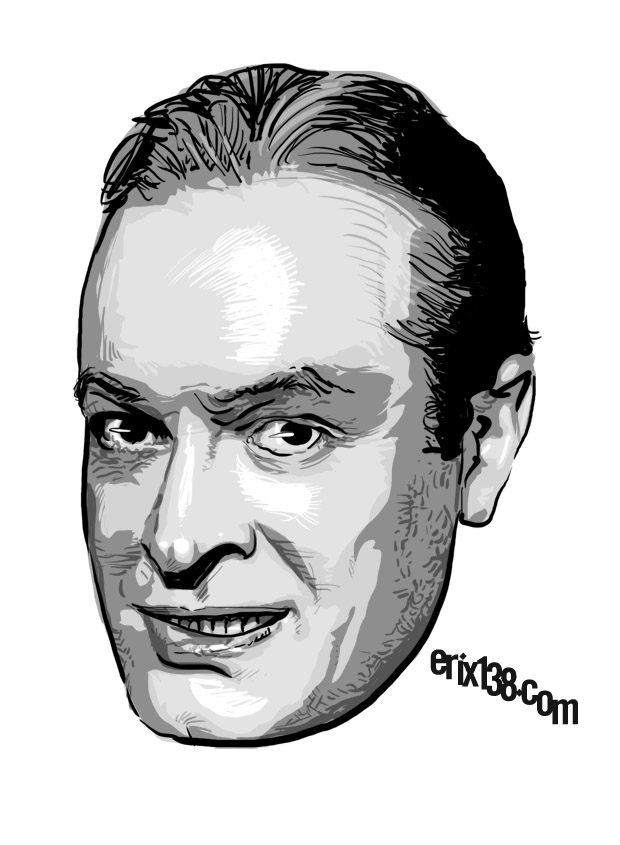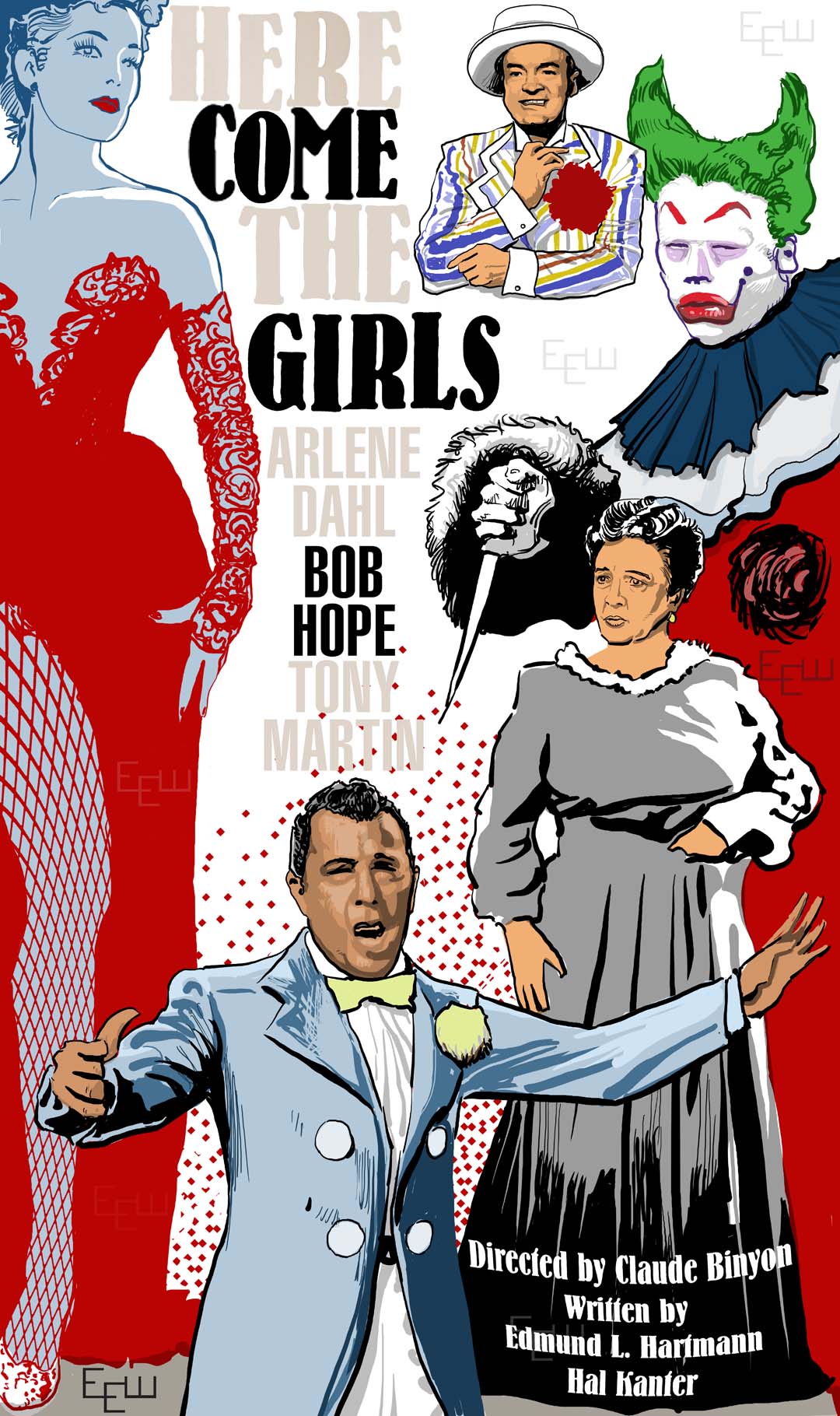Review: Here Come the Girls – 1953
"In the year 1900, there lived a chorus boy named Stanley Snodgrass, who worked his way up from the gutter... only to discover that he had a round trip ticket."
Near the beginning of Here Come the Girls a line of male chorus is chanting "Girls! Girls! Girls! Girls!" and they're not kidding, both the stage show (also titled "Here Come the Girls") and the film itself is full of girls (and Bob Hope jokes), either on stage or milling around the theatre where most of the story takes place. We've got showgirls by the battalion, and then there's the two female leads, Arlene Dahl and Rosemary Clooney, who we're also frequently looking at.
The backbone of the tale is that Stanley Snodgrass (Bob Hope) is convinced he belongs on the theater stage, an ambition he gets from his mother (Zamah Cunningham) who has groomed him for stardom despite the objections of her husband (Millard Mitchell) and also despite an apparent complete lack of ability in the son.
When Here Come the Girls starts, outside there is snowfall tumbling down around the Jersey City Theatre building where a performance is taking place. We see that the costumes are sort of historical to this older era, but tighter fitting and more revealing like 1950s Las Vegas. Despite the season and the location, the ladies on display look California-tanned and are energetically being sung to by two lines of men in striped jackets and white "boater" hats.
Amid the hub-bub of the stage swirling with bodies, Arlene Dahl and Tony Martin are in the center singing, but we soon spot a certain chorus boy on the sidelines starting to malfunction, stepping out of time to everyone else and then not hitting his marks on the stage, finally gumming up the production completely and sending the star actress falling from a high perch to the stage during the song climax.
The malfunctioning chorus boy is of course our star Bob Hope. Though he gets fired and thrown out of the theatre into the falling snow, he is soon integrated back into the production because a maniac killer (Robert Strauss) has escaped prison, and because he is pathologically obsessed with Irene Baily (Arlene Dahl) and claims he will murder whoever is her boyfriend, the actual boyfriend (Tony Martin) gets out of the way and stage producer Harry Fraser (Fred Clark) elevates the rehired and unsuspecting chorus boy Bob Hope into a starring role, a decoy to protect the expensive and popular leading man.
Here Come the Girls uses sharp Technicolor for the many musical productions, and though the eight songs (by Jay Livingston for the music and Ray Evans are for the lyrics) are not our main reason for the film, some of the tunes are given nice showcases, such as the dancer Inesita doing a mock-flemenco piece for the song It's Torment before Hope and Dahl take over singing the lyrics, ending with Hope careening around the stage and falling off into a kettle drum in the orchestra pit (which reminded me of a similar disaster on stage in the "Academy Awards" sequence from Naked Gun 33 1/3 released 1994).
Because Hope's character lacks stage talent and the ability to remember his lines, the cast resorts to writing his dialogue onto their hands, backs and anything else that is handy to put into his view onstage when he begins to forget.
Elevated into an unearned stardom, Bob Hope's character expands like a peacock, revealing a ridiculous outsized ego. Combined with the usual cowardice of a Bob Hope cinema character, we see Stanley begging to be let off the stage when the murdering assassin is thought to be near, and then pushing his way back to the spotlight when it turns out to be a false alarm.
The best part of the humor in Here Come the Girls is combining Bob Hope with a turn of the century world of top hats and black coats, showing us dignified audiences that are in high contrast to the mayhem that regularly ensues. Hope's character is constantly wrecking the stage performances and is fired and rehired repetitiously. Meanwhile, William Demerest, as a police detective Logan, keeps trying to entrap the sneaky killer and needs Hope out in front and as obvious to the audience as possible.
Here Come the Girls is a Bob Hope picture in just about every sense, produced by Hope Enterprises for Paramount, has the requisite Bing Crosby joke, and features Hope through most of the story, although Fred Clark, Tony Martin and Arlene Dahl also get some time to be on their own with the camera.
The truly mystifying element of the tale is how unbelievable Rosemary Clooney (as Daisy Crockett) is shown to us as inexplicably Hope's character's long-suffering girlfriend. She weathers his ego-saturated obnoxiousness without registering a normal reaction to it at all, a completely broken link to reality that is probably necessary for a Bob Hope character to survive the full runtime of a movie like this and is, intended or not, hilarious or cloying depending on your point of view.
Rosemary Clooney's voice is a precision instrument for the goofy self-satirizing "Be my baby, Ali Baba," which seems to be the musical centerpiece of the film.
Related:
Bob Hope and Jane Russell in The Paleface - 1948
Bob Hope and Jane Russell in Son of Paleface - 1952
Bob Hope and Paulette Goddard in The Cat and the Canary - 1939

AMAZON: The Awful Truth - Criterion Collection Blu-ray
What's Recent
- The Devil and Miss Jones - 1941
- Sinners - 2025
- Something for the Boys - 1944
- The Mark of Zorro - 1940
- The Woman They Almost Lynched - 1953
- The Cat Girl - 1957
- El Vampiro - 1957
- Adventures of Hajji Baba – 1954
- Shanghai Express 1932
- Pandora's Box – 1929
- Diary of A Chambermaid - 1946
- The City Without Jews - 1924
- The Long Haul
- Midnight, 1939
- Hercules Against the Moon Men, 1964
- Send Me No Flowers - 1964
- Raymie - 1964.
- The Hangman 1959
- Kiss Me, Deadly - 1955
- Dracula's Daughter - 1936
- Crossing Delancey - 1988
- The Scavengers – 1959
- Mr. Hobbs Takes A Vacation - 1962
- Jackpot – 2024
- Surf Party - 1964
- Cyclotrode X – 1966
Original Page August 2022 | Updated November 2023
